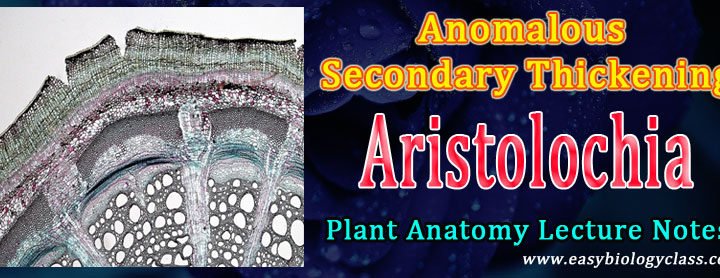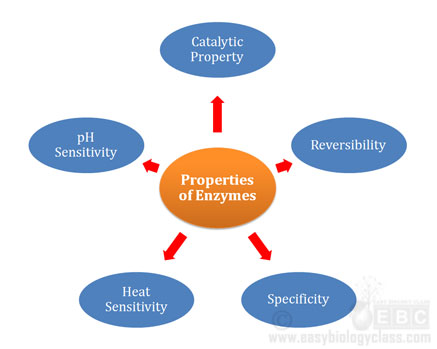Mirabilis jalapa (4 O’clock plant) and Nyctanthes belongs to the family Nyctaginaceae. In the previous post we discussed the anomalous secondary thickening in Amaranthus / Achyranthes (Amaranthaceae). Similar to Amaranthus, the secondary thickening in Mirabilis and Nyctanthes also occurs due to the formation of accessory cambia formed external to the […]
Continue ReadingCategory Archives: Lecture Notes
Anomalous Secondary Thickening in Amaranthus and Achyranthes Stem
Anomalous secondary thickening in Amaranthus and Achyranthes occurs due to the abnormal activity of an abnormal cambium. Here, new cambial rings are formed from the cortex or pericycle after the older cambium has ceased its functioning. The new cambial strip formed also behaves abnormally. This type of anomalous secondary thickening […]
Continue ReadingAnomalous Secondary Thickening in Aristolochia Stem
Aristolochia (Family: Aristolochiaceae) is a climber and the pattern of secondary thickening in the stem of Aristolochia helps its twining habitat. In Aristolochia, the cambium is normal but showing abnormal activity. During the secondary growth, the normal cambial ring is formed by the fusion of fascicular and inter-fascicular cambium. However, […]
Continue ReadingFactors Affecting Enzymatic Activity (Biochemistry Lecture Notes)
In the previous post, we have discussed the Properties of Enzymes. In the present post, we will see what all are the factors that affect the catalytic activity of an enzyme in the living system. Factors Affecting Enzymatic Activity Ø The catalytic activities of enzymes are affected by multiple factors. […]
Continue ReadingProperties of Enzymes (Biochemistry Lecture Notes)
Enzymes are biological catalysis. They are specialized proteins (except ribozymes) capable of catalyzing specific reactions in the cells. In the previous post, we have discussed the Structure and Functions of Enzymes. In the present post, we will discuss the Properties of Enzymes. What are the Properties of Enzymes? @. The […]
Continue Reading



